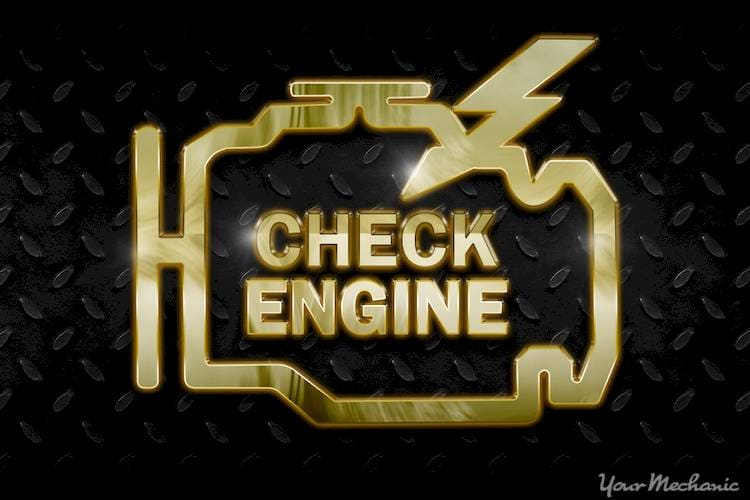P0108 Trouble code definition
Manifold Air Pressure (MAP) Barometric Pressure Sensor Circuit High Voltage Input Problem
What the P0108 code means
P0108 is the code for a problem with the MAP electrical circuit sensor having too high voltage input to the Engine Control Unit (ECU). This means that the voltage input to the ECU is too high and that it is not in the correct range for proper engine operation to work with inputs from the Mass Air Flow Sensor (MAF) and Throttle Position Switch (TPS).
What causes the P0108 code?
The MAP circuit input to the ECU is too high problem may have several causes:
The source of the problem is that the sensor range voltage input is higher than what’s required by the ECU, generally above 5 volts.
The most common problem is a bad MAP sensor.
The wiring or connector may be bad or have a bad connection, or could be too close to higher voltage consumption components, especially alternators, ignition wires, etc. which causes elevated voltage readings. A poor electrical ground can cause problems also.
The sensor itself may be simply operating out of range from age or damage to the sensor’s internal components.
MAP sensors must operate within specific ranges to send correct signals for the ECU to coordinate with the throttle position sensor so it can adjust correctly for proper engine operation. The specified range is .5 to 5 volts.
If the engine is not in good condition, is missing, has poor fuel pressure, or has an internal issue with the engine like a burned valve, these things can prevent the MAP sensor from getting a correct output. The ECU could also be bad but that is rare.
What are the symptoms of the P0108 code?
P0108 code will be generally preceded by the Check Engine Light coming on the dashboard instrument display. The vehicle will most often not run well, idle poorly, accelerate erratically, have excessive fuel consumption, or backfire because the MAP sensor and throttle position sensor are not operating together.
How does a mechanic diagnose the P0108 code?
P0108 is diagnosed with an OBD-II scanner. A qualified technician should then reset the OBD-II fault codes and road test the vehicle to see if the code comes back. He can observe this by watching live streaming on his scanner while driving. If the code comes back, then the mechanic will need to do a voltage test with the key turned on, using a multimeter, and verifying that there is 5 volts input to the MAP sensor and a minimum of .5 to 1 volt with throttle closed.
With the engine running at idle, it should have minimum 1 volt on the input to the ECU and then increase with engine speed and load. If the voltages are more than 2 volts at idle and quickly go up to 5 volts or higher, then most likely the MAP sensor is bad and needs replacement
Common mistakes when diagnosing the P0108 code
Diagnostic errors are largely due to not following the test procedure. First, follow the procedure in the diagnosis to ensure there is the correct voltage to the sensor and from the sensor to the ECU.
The technician must verify that the voltage output of the MAP Sensor is in the correct range, fluctuates with the engine speed, and has proper voltage. Idle voltage is normally 1 to 1.5 volts and full throttle is usually around 4.5 volts.
Do not buy a new MAP Sensor or ECU unless it is clearly at fault.
How serious is the P0108 code?
The P0108 code will result in poor running of the engine and requires immediate attention. The MAP sensor high voltage output issue can cause excessive fuel consumption, rough operation, backfiring, difficulty starting in certain circumstances, and can cause other damage if continued to be driven.
Often times, if the Check Engine Light came on immediately at startup, then the OBD- II system can be reset and the vehicle will operate normally.
What repairs can fix the P0108 code?
The most common potential repairs to address the P0108 code are as follows:
Verify the code with a scanner. Then reset the fault codes and perform a road test with a scanner attached with live data streaming.
If the P0108 code comes back, then follow the test procedure.
Check the MAP sensor voltage, which is normally 5 volts in and .5 out at idle, and a maximum of 5 volts to the ECU. Also check the electrical connector and wiring. Disconnect the electrical connector and then reinstall it to ensure a fresh electrical connection. Then check the voltage output on the MAP sensor to see if it is in the correct range.
At this point it is necessary to determine if the MAP sensor is defective and if it has no or incorrect output, then replace the sensor. If all checks are good, then a final test to determine if the ECU is bad must be done.
Many vehicles with mileage over 100,000 have momentary sensor problems that usually occur during start up or prolonged stress situations on the drive train.
If the Check Engine Light comes on and the vehicle seems to be operating normally, the OBD-II system can be reset using the scanner and the problem may not reoccur. This is why it is important to verify the fault and reset it before doing any repairs.
Need help with a P0108 code?
YourMechanic offers certified mobile mechanics who will come to your home or office to diagnose and repair your vehicle. Get a quote and book an appointment online or speak to a service advisor at 1-800-701-6230.
Check Engine Light
P0108
trouble codes





